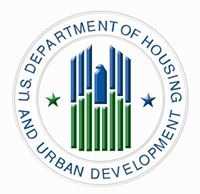Funding to make low-income housing safer and healthier
WASHINGTON –- (RealEstateRama) — In a continuous effort to keep families and their children safe from lead-based paint and other home health and safety hazards, the U.S. Department of Housing and Urban Development (HUD) today awarded more than $127 million to 48 state and local government agencies (see chart below).
The grant funding announced today will reduce the number of children with elevated blood lead levels, and protect nearly 7,600 families living in homes with significant lead and other home health and safety hazards. HUD’s Lead Based Paint Hazard Control grant programs have a proven history of success, filling critical needs in communities where no other resources exist to address substandard housing that threatens the health of the most vulnerable residents.
Today in Washington, DC, HUD Secretary Ben Carson announced the new funding during an event that featured a panel discussion about the importance of public and private partnerships to the work of healthy homes. With HUD celebrating June’s National Healthy Homes Month, Carson said he wants tomake lead paint hazard removal a top priority.
“Children perform better at school and in life if they live in a healthy home,” said Secretary Carson. “A healthy start at home translates to a successful life outside of the home. HUD is committed to working with local communities to eradicate lead paint poisoning to make sure our homes are safe and ensure positive outcomes for families and their kids.”
“Millions of families and children are seeing their hope for the future threatened by poor health simply because of where they live,” noted Jon L. Gant, Director of HUD’s Office of Lead Hazard Control and Healthy Homes. “This round of funding includes awards to eight cities that are receiving grant awards for the first time. We are pleased the program is expanding into these previously unserved communities.”
Unsafe and unhealthy homes affect the health of millions of people of all income levels, geographic areas, and walks of life in the U.S. These homes affect the economy directly through increased utilization of health care services, and indirectly through lost wages and increased school days missed. Housing improvements help prevent injuries and illnesses, reduce associated health care and social services costs, reduce absentee rates for children in school and adults at work, and reduce stress—all which help to improve the quality of life.
HUD’s Office of Lead Hazard Control and Healthy Homes promotes local efforts to eliminate dangerous lead paint and other housing-related health hazards from lower income homes; encourages private sector investment in lead hazard control; supports cutting-edge research on methods for assessing and controlling housing-related health and safety hazards; and educates the public about the dangers of hazards in the home.
The funding announced today directs critical funds to cities, counties and states to eliminate dangerous lead paint and other housing-related health hazards in thousands of privately-owned, low-income housing units. As part of these awards, HUD is providing these Lead Based Paint Hazard Control grantees just over $14 million in Healthy Homes supplemental funding to help communities mitigate multiple health hazards in high-risk housing simultaneously,in conjunction with their lead hazard control activities.
###
HUD’s mission is to create strong, sustainable, inclusive communities and quality affordable homes for all.More information about HUD and its programs is available on the Internet at www.hud.gov and http://espanol.hud.gov. You can also connect with HUD on social media or sign up for news alerts on HUD’s Email List.
You can follow Secretary Carson on Twitter, Facebook and Instagram.
The following is a state-by-state breakdown of the funding announced today. Read a complete project-by-project summary of the programs awarded grants today:
| State |
Grantee |
Total Grant Award |
| Arizona | City of Phoenix |
$2,900,000 |
| Pima County |
$1,650,000 |
|
| California | County of Los Angeles |
$3,400,000 |
| Fresno County |
$1,000,000 |
|
| Colorado | City and County of Denver |
$2,813,904 |
| Connecticut | City of Bridgeport |
$2,875,000 |
| City of Hartford |
$3,400,000 |
|
| City of Waterbury |
$2,900,000 |
|
| State of Connecticut |
$3,400,000 |
|
| Iowa | City of Clinton |
$1,650,000 |
| City of Waterloo |
$2,900,000 |
|
| Idaho | City of Pocatello |
$1,499,999 |
| Indiana | State of Indiana |
$3,400,000 |
| Kansas | Wyandotte County |
$1,650,000 |
| Kentucky | Louisville/Jefferson County |
$2,899,990 |
| City of Brockton |
$1,367,085 |
|
| City of Malden |
$1,367,085 |
|
| Massachusetts | City of Somerville |
$1,703,572 |
| Maine | City of Lewiston |
$3,400,000 |
| Michigan | Charter County of Wayne |
$2,900,000 |
| City of Jackson |
$2,900,000 |
|
| Minnesota | City of Minneapolis |
$2,900,000 |
| Hennepin County |
$3,400,000 |
|
| Missouri
|
City of St. Louis |
$2,100,000 |
| City of Kansas City |
$2,900,000 |
|
| North Carolina | City of Greensboro |
$2,900,000 |
| New Hampshire
|
City of Nashua |
$2,900,000 |
| New Hampshire Housing Finance |
$2,900,000 |
|
| New Jersey | County of Hudson |
$2,424,097 |
| Nevada | City of Las Vegas |
$1,649,710 |
| New York
|
City of Rochester |
$1,000,000 |
| City of Schenectady |
$2,999,754 |
|
| City of New York |
$3,400,000 |
|
| Ohio
|
City of Cincinnati |
$3,400,000 |
| City of Cleveland |
$3,400,000 |
|
| City of Toledo |
$2,900,000 |
|
| Cuyahoga County |
$2,900,000 |
|
| Oregon | City of Portland |
$3,400,000 |
| Pennsylvania
|
County of Northampton |
$1,650,000 |
| City of Erie |
$3,000,000 |
|
| Rhode Island | City of Providence |
$3,400,000 |
| Tennessee | City of Chattanooga |
$1,650,000 |
| Texas
|
City of Fort Worth |
$3,400,000 |
| City of Houston |
$3,000,000 |
|
| Virginia
|
City of Richmond |
$2,710,314 |
| City of Roanoke |
$2,719,660 |
|
| Vermont | City of Burlington |
$2,900,000 |
| Wisconsin | Kenosha County |
$3,300,000 |








